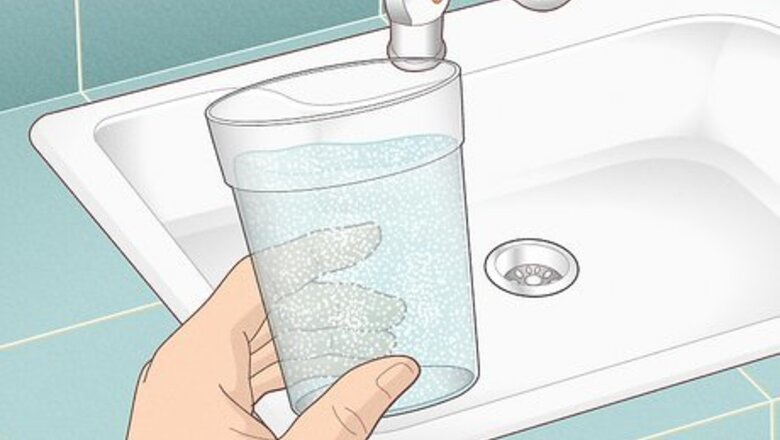
views
- If your water clears up after a few minutes, the problem is usually cloudiness caused by temperature fluctuations.
- This problem can be easily solved by letting the water run for a few minutes or by insulating your pipes.
- If the cloudiness is being caused by hard water, you may need to install a water softener.
- If you think your water is contaminated, avoid drinking, cooking, or brushing your teeth with the water.
Removing Air Bubbles from the Water

Pour the water into a glass and see if it clears up. The most common reason for cloudy tap water is air bubbles in your water pipes. This is harmless and the bubbles should dissipate on their own. Do a test and run some water from the sink into a clear glass. Set the glass down and check it after a few minutes. If the cloudiness disappears in a few minutes, air bubbles were to blame. You can safely drink this water. If the cloudiness doesn’t disappear, there may be something else causing the problem.
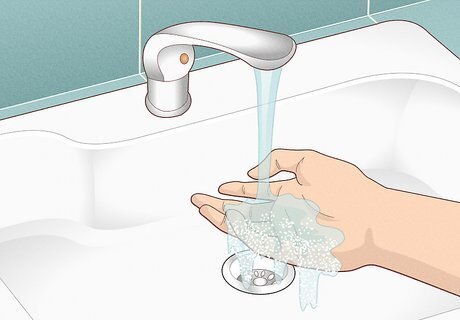
Run the tap water until it becomes cold. Air bubbles usually form when cold water heats up in your pipes, and dissolved air escapes. If your water is cloudy from air bubbles, try flushing the tap and letting the warm water flow out. When cold water begins flowing, it should have no air bubbles. If you use this method, save this water by putting a pot under the faucet while you flush the tap. You can then use this water for cleaning or watering your plants.

Insulate your pipes to prevent temperature swings. Air bubbles can form when cold water gets warmer in your pipes. To prevent this from happening, insulate your pipes to keep the water at a consistent temperature. Get some pipe sleeves or fiberglass insulation from a hardware store. Then tape this insulation material to your pipes. If you want to prevent cloudy tap water, you don't have to insulate all your pipes. Only insulating the ones that feed your sinks will help the problem.
Softening Hard Water
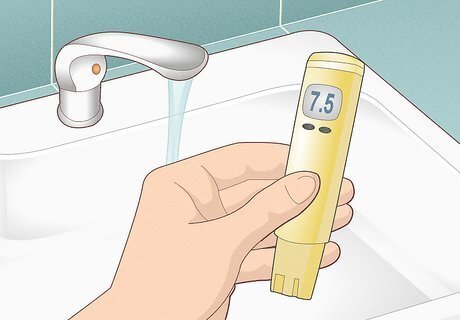
Test if you have hard water. “Hardness” refers to the level of dissolved minerals in water. Hard water is usually harmless to drink, but can cause other problems like staining your dishes or clothes. Hard water is sometimes cloudy. If the cloudiness in your water does not dissipate after you leave it alone for a few minutes, hard water may be the problem you’re experiencing. There are home testing kits you can use to measure the hardness of your water. If your water measures greater than 7.0 grains per gallon, it is very hard. If you’ve noticed water stains on your sink, shower, toilet, or dishes, this is another indicator that you have hard water. You can also contact your water provider for a hardness test.

Install a water-softener under your sink. These units remove the dissolved minerals from your water and make it softer. If the hard water coming out of your sink is bothering you, try installing one to soften your tap water. Note that there is a difference between water filtering and water softening. A normal sink filter won’t soften the water, and a water softener won’t remove germs or other contaminants. The process of water softening also increases the sodium content of your water. If you are on a low-sodium diet, consult your doctor before drinking softened water.
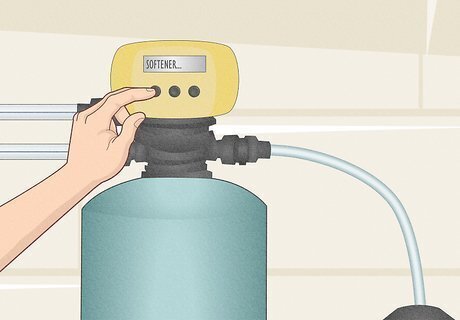
Use a water softening unit for your whole house. Hard water doesn’t just affect your tap water. It also affects your shower, washing machine, and dishwasher. If hard water is a problem, you can install a full-house water softening unit. This will soften the water in your entire house. This is an expensive option. Water softening units can cost over $2,000, including the installation cost.
Avoiding Contaminated Water

Contact your water provider if you suspect a problem with your water. If nothing you do fixes the cloudiness in your water, there may be a contamination issue. Report the problem to your water provider right away. Until you have a confirmation from your water provider that the water is safe, drink bottled water.
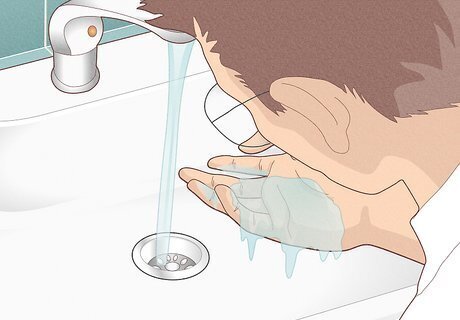
Check if the water smells stagnant or like sewage. On rare occasions, cloudy water is caused by a backup of sewage materials into drinking water. In this case, the water will smell bad. Check and see if the water emits an unusual odor. If your water smells strange, take the glass into other rooms and smell it there. You may actually be smelling something in your kitchen area instead of the water itself. If it still smells in a different room, the problem is probably your water. Do not drink the water if it smells contaminated. Report the problem to your water provider right away.

Find out if there is any construction, oil drilling, or mining nearby. If your water looks, tastes, or smells strange without an apparent cause, investigate your local area. Construction or mining operations can contaminate water sources. If you suspect that such an operation is contaminating your water supply, you can report the violation to the US Environmental Protection Agency by calling 1-800-424-8802. You can also report the violation online at https://echo.epa.gov/report-environmental-violations.












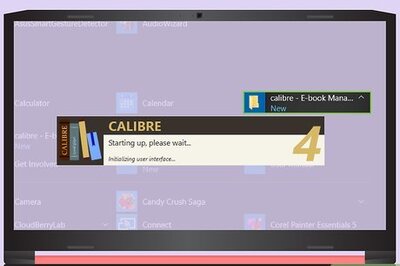





Comments
0 comment